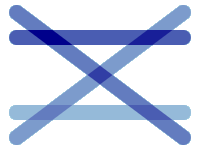Codecov Report
Merging #1146 (a284042) into master (e3d2d1f) will increase coverage by
0.17%. The diff coverage is95.74%.
@@ Coverage Diff @@
## master #1146 +/- ##
==========================================
+ Coverage 85.20% 85.37% +0.17%
==========================================
Files 34 34
Lines 7732 7782 +50
==========================================
+ Hits 6588 6644 +56
+ Misses 1144 1138 -6 | Impacted Files | Coverage Δ | |
|---|---|---|
| datashader/compiler.py | 95.08% <83.33%> (+0.04%) |
:arrow_up: |
| datashader/reductions.py | 87.23% <91.66%> (+1.39%) |
:arrow_up: |
| datashader/core.py | 87.76% <100.00%> (ø) |
|
| datashader/enums.py | 100.00% <100.00%> (ø) |
|
| datashader/glyphs/line.py | 92.80% <100.00%> (+0.09%) |
:arrow_up: |
| datashader/utils.py | 76.62% <100.00%> (+1.11%) |
:arrow_up: |
:mega: We’re building smart automated test selection to slash your CI/CD build times. Learn more
This implements compound reductions such as
meanandsummaryfor antialiased lines on the CPU only. The only reductions not yet covered arestdandvar, but there is a possible solution for these being investigated. There is no support for antialiased lines on the GPU, and this will not occur soon as it requires significant changes.Demonstration of antialiased lines and various reductions:
Output images for


any,countandsumminandmaxfirst,last,meanTwo observations:
min,firstandlast.meanloses the antialiased edges as it essentially performs a block fill of the pixels that would be rendered partially transparent. This is understandable from the maths ofmean = sum / count. For a single antialiased line of a constantvaluethe pixel values forsumequalcount * value, hencemean = value. Note that this is also subject to numerical rounding (not seen here) as typically an antialiasedcountis calculated usingfloat32whereas asumusesfloat64.Closes #1133.